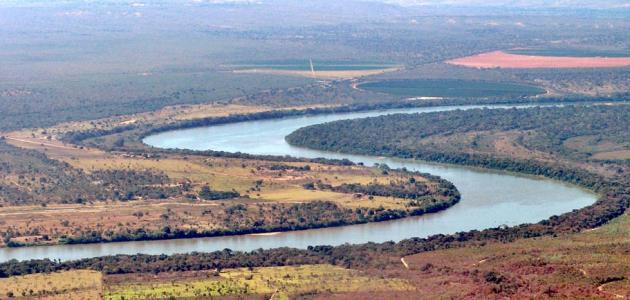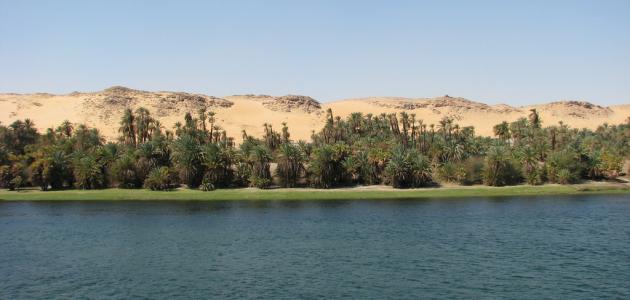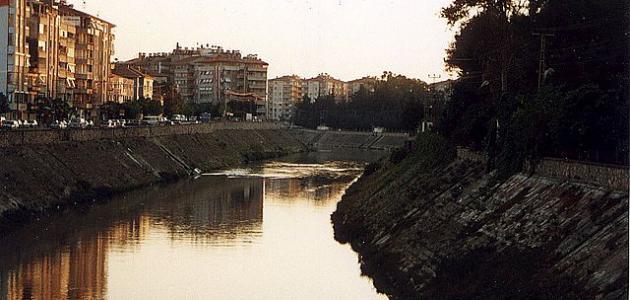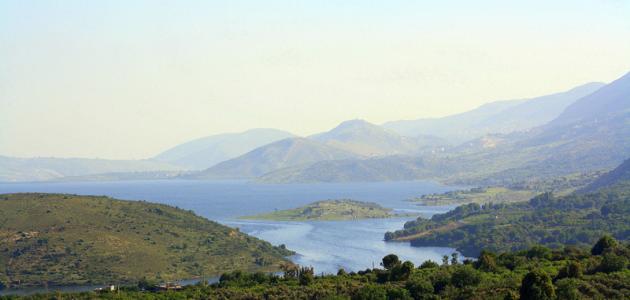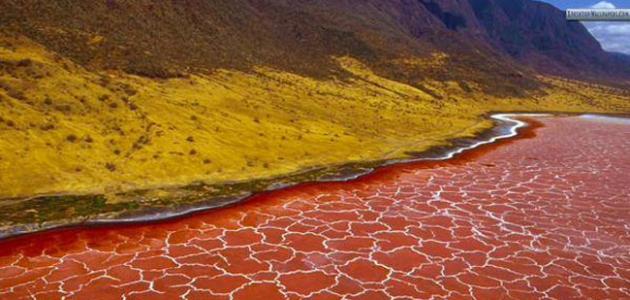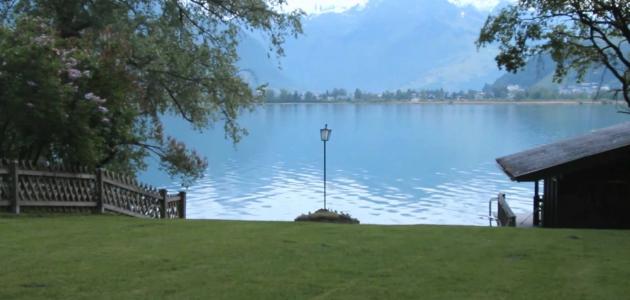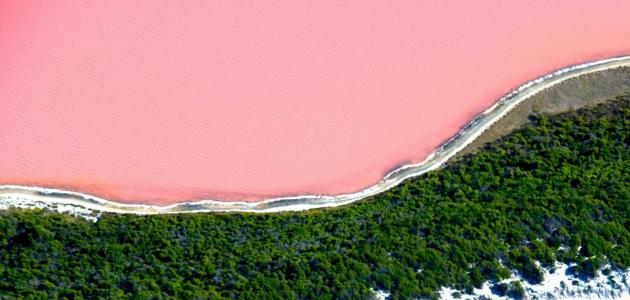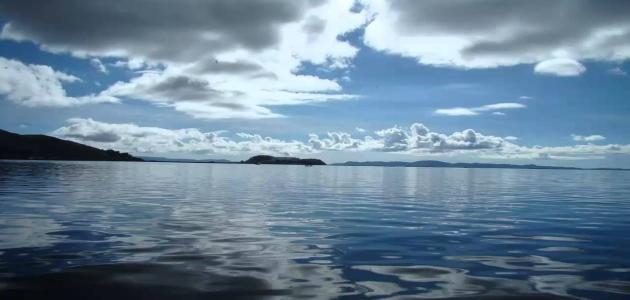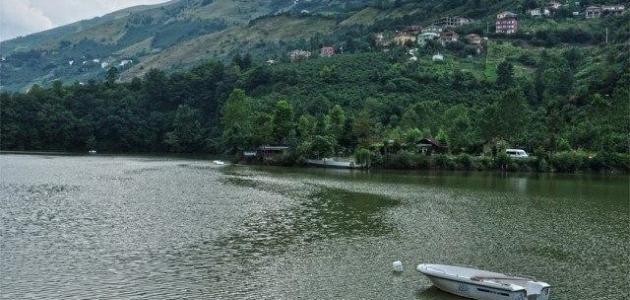Jordan River site
The Jordan River is located in southwest Asia, in a low-lying region of the Middle East. As it has the lowest elevation compared to the rest of the world's rivers, and the Jordan River originates from Mount Hermon; Which is located between the states of Syria and Lebanon, and flows south towards northern Palestine, then down to the Sea of Galilee. As for the southern branch of the river, it originates from Lake Tiberias, and flows between the lands of Palestine and the West Bank along the eastern bank west of Jordan, and then finally empties into the Dead Sea; Which is about 429 meters below sea level.
The area that lies between the Jordan Valley and the Dead Sea rift crater contains the groove from which the waters of the Jordan River flow.2The river's headwaters rise to about 522 meters above sea level, while its mouth drops to more than 400 meters below sea level, and the length of its course, taking into account the meanderings and bends that frequently exist, is about 320 km. It should be noted that the Jordan River basin is divided into Three main sections:
- upstream: This stream rises to about 70 meters above sea level, and is bordered by the heights of the Galilee Mountains and the Golan Heights, with an area of 16% of the total area of the basin. Among the most prominent sections of this stream are:
- Hasbani River: This river originates in Lebanon near the slopes of Mount Hermon.
- Banias River: The Banias River originates in Syria, specifically from the Golan Heights.
- Al-Waddan Spring: This river originates from Palestine, specifically near an area called Tal Al-Qadi.
- Middle stream: This stream is located along the area between the Sea of Galilee and the Hula Depression, and the water flows in this area at a high speed.
- Downstream: This stream is located along the area between the south of Lake Kinneret, which is 212 meters below sea level, to its mouth north of the Dead Sea.
The importance of the location of the Jordan River
The Jordan River is widely known. This is thanks to several factors, the most important of which is its distinctive geography, and its location associated with ancient historical events. It also takes place in the Great Rift Valley. It is a valley located along the continent of Asia to the continent of Africa, specifically in a part of this valley called the Jordan Valley region, in addition to that it is distinguished by the heights that border it on both sides, and many bridges have been built between its banks; to facilitate the process of movement and crossing between the two sides, and the archaeological survey of the area that includes the Jordan Valley has shown that humans have always been present there, especially on the eastern side, especially in the period between the Stone Age and modern times, as evidenced by the information received from the excavations and excavations that were conducted on the side Eastern, specifically from the Yarmouk River to the Dead Sea.
Read also:How to preserve the Nile RiverThe Jordan River is a meeting point for the continent of Africa, the continent of Europe, and the continent of Asia. Which made his region with a humid climate and a fertile environment full of biodiversity, in addition to that the narrow passage of the river is considered; Which connects the Sea of Galilee with the Dead Sea, an important passage for migratory birds. Where nearly 500 birds pass through it twice throughout the year, and the Jordan River Valley is distinguished from other rivers in the world in that it has cultural and historical importance on a global level. As it was in the past a crossing point for immigrants from the continent of Africa, and it witnessed many historical events over time. Such as battles and building Crusader castles and Roman cities.
Climate of the Jordan River
The climate of the Jordan River changes according to its sections and destinations. The lower part of it is characterized by a mild climate, while the southern and central parts are characterized by a desert climate. As for the annual rainfall rate in the Jordan Basin; It averages 380 mm. However, these quantities of water are not equal throughout the Jordan Basin and vary according to the region. The average rainfall in the north of Lake Kinneret is 1,400 mm, while the lower region of the Jordan Basin does not exceed 100 mm.
The largest part of the fertile lands of the Jordan River Basin is located within the Jordanian lands and the lands of the West Bank along the eastern and western banks of the Jordan River, and the rainfall decreases by an amount of 350 mm annually. As for the temperature of the Jordan River Basin; Its annual average is about 18 degrees Celsius, and temperatures range in January from 5 degrees Celsius to 9 degrees Celsius, while in August it reaches 26 degrees Celsius, and it may increase to reach a maximum of 30 degrees Celsius.
Read also:What is the length of the Nile River?Geography of the Jordan River
The Jordan River is characterized by the fact that its waters are few and that it is shallow and has no depth, and the water level is high in the winter period, specifically from January to March, and the water level decreases in it in late summer until the beginning of autumn, and the river contains large amounts of dust and sediment, which increases its load, and the river water flows rapidly; This makes it difficult to navigate due to the danger of its fast upper path, and its low water and winding lower path.
Read also:Qaraoun LakeThe water of the Jordan River is salty, and its high salinity is due to the hot salt springs, especially those located on the western side of Lake Tiberias. The water of the Jordan River also contains a high percentage of gypsum, and in most cases a percentage of salts remains in the soil when using River water to irrigate crops. As for water uses in the modern era; From 70% to 90% is used for human uses, and these uses were a direct cause of the decline in the level of the Dead Sea water into which the river flows, in addition to the rate of evaporation in recent times, which was a major cause of the decrease in sea level.

